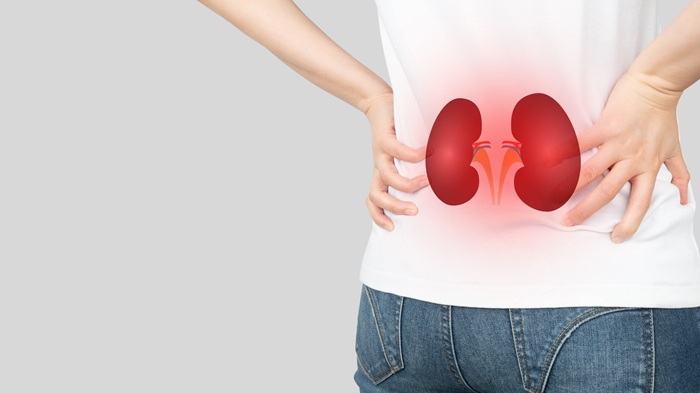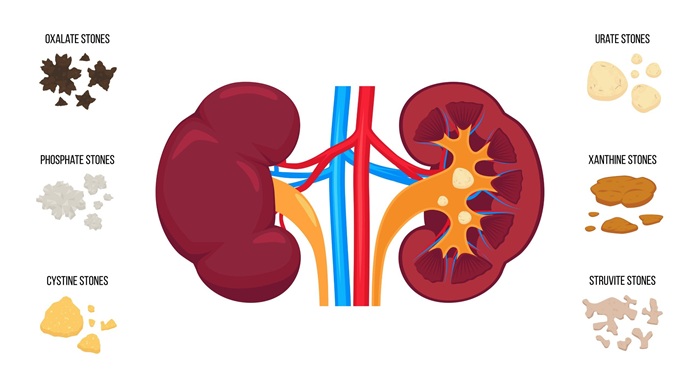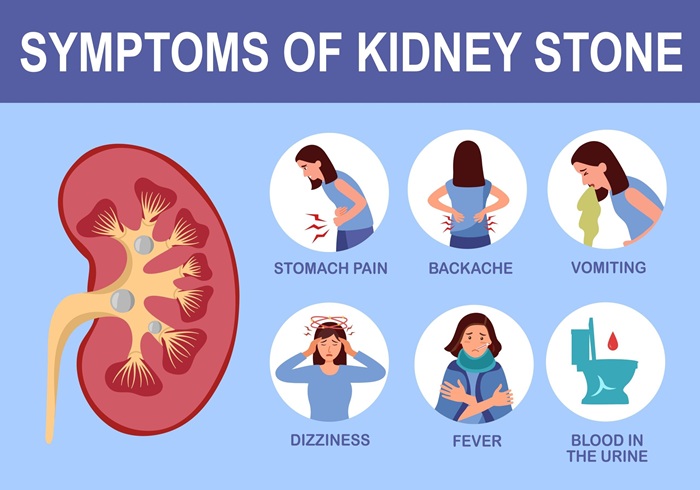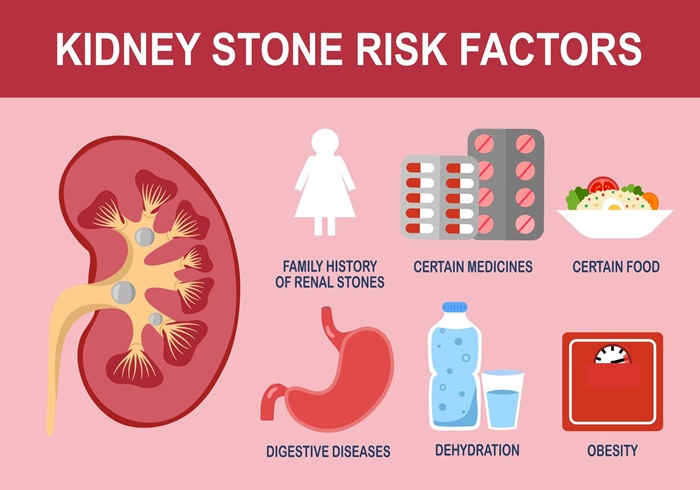Kidney stones are solid deposits of minerals and salts that develop in the kidneys. They can differ in size and often cause intense discomfort when moving through the urinary tract. Typical kidney stone symptoms include sharp pain in the lower back or abdomen, blood in the urine, and frequent urges to urinate. Treatment varies based on the size and type of the stone, ranging from medications to minimally invasive procedures. Preventing kidney stones involves staying well-hydrated and making dietary adjustments.

Kidney stones (also called renal calculi) are solid masses formed from crystallized minerals and salts in the kidneys. While the kidneys filter waste from the blood and produce urine, certain conditions can cause these waste substances to clump together and form stones.
Depending on their size, kidney stones may pass naturally or require medical intervention if they block the urinary tract or cause intense pain.

Kidney stones are classified based on their chemical composition. Each type forms under specific conditions and has distinct characteristics. Understanding these types helps in determining the appropriate treatment and prevention strategies.
These are the most common type of kidney stones, making up about 80% of all cases. They can be further divided into two subtypes:
Struvite stones are often linked to urinary tract infections (UTIs) caused by bacteria that release urease. This enzyme raises the pH of the urine, making it more alkaline, which creates an ideal environment for these stones to form. These stones grow quickly and can become quite large, sometimes forming a "staghorn" shape that takes the shape of the kidney's internal structures.
These stones form in people with high levels of uric acid in their urine. Risk factors include:
Cystine stones are rare and caused by a genetic disorder called cystinuria, where the kidneys excrete excessive amounts of cystine, a naturally occurring amino acid, into the urine. Cystine is less soluble in water and tends to crystallize, forming stones.
Phosphate stones, like calcium phosphate stones, form in alkaline urine. They can result from certain kidney disorders, dietary habits, or chronic infections that alter urine pH. These stones often coexist with other stone types, particularly struvite.
Xanthine stones are extremely rare and occur due to a genetic enzyme deficiency called xanthine oxidase deficiency, which prevents the proper breakdown of xanthine, leading to its accumulation in the urine. They are often observed in individuals with inherited metabolic disorders.
The symptoms depend on the size and location of the stone. Common symptoms of kidney stones include:


Several factors can increase the risk of developing kidney stones:
To diagnose kidney stones, a doctor may recommend:
A urinalysis checks for crystals, blood, or infection in the urine. Crystals can indicate the type of stone, while blood in the urine may result from stones irritating the urinary tract. Signs of infection, like white blood cells or bacteria, could point to conditions like struvite stones.
Imaging locates and measures kidney stones. Ultrasound is a safe, non-invasive option that can detect blockages, while CT scans provide highly detailed images and are the most accurate method for spotting stones. X-rays (KUB) may also be used, though they are less effective for small or uric acid stones.
Blood tests identify factors contributing to stone formation, such as high calcium (hypercalcemia) or uric acid levels, which are linked to calcium and uric acid stones respectively.
If you pass a stone, it can be analysed to determine its composition. This helps in planning personalized prevention strategies.
The treatment for kidney stones depends on their size, type, and location:
To reduce the risk of developing kidney stones:
Seek immediate medical attention if you experience:
You are welcome to book an appointment with a urologist or nephrologist at a SPARSH Hospital near you. Early diagnosis and treatment can prevent complications and ensure a quicker recovery.
Can one live with kidney stones?
Yes, many people live with small kidney stones that don’t cause symptoms. However, regular monitoring and preventive measures are essential to avoid complications.
What dissolves kidney stones fast?
Certain medications prescribed by a doctor can help dissolve uric acid stones. Drinking plenty of water and consuming citrate-rich foods like lemons may also help.
What are the worst foods for kidney stones?
Foods high in oxalates (like spinach, beets, and chocolate), salt, and excessive animal protein can contribute to stone formation.
Which exercise is good for kidney stones?
Mild to moderate physical activities, like walking or yoga, can help improve kidney function and may aid in passing small stones.
Which drink reduces kidney stones?
Citrus drinks like lemonade or orange juice can help by increasing citrate levels in urine, which prevents stone formation.
What is the best sleeping position for kidney stones?
Sleeping on the side opposite to the kidney stone pain area may help alleviate discomfort. However, consult a doctor for specific advice.